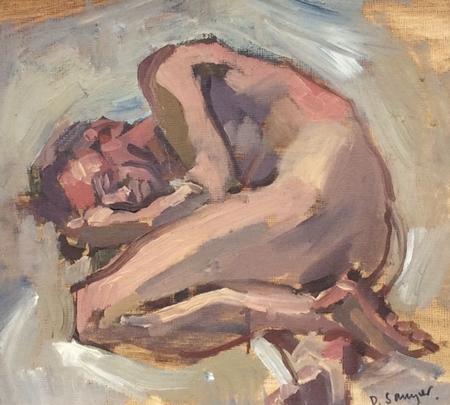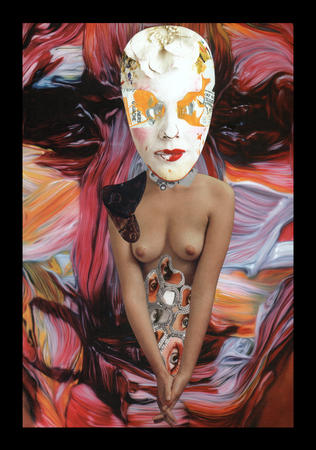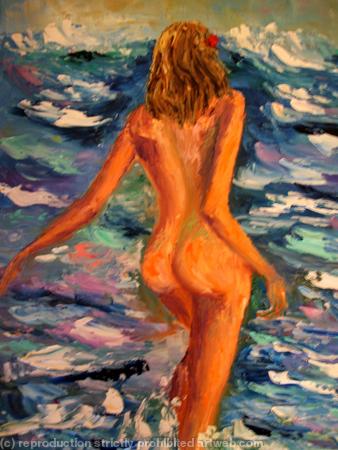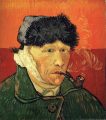The self-portrait has long been absolutely central to Western art. It’s a genre that has been dabbled in by seemingly every celebrated and less-celebrated artist, from Sir Anthony van Dyck and Joseph Mallord William Turner to Lucian Freud and Louise Bourgeois.
In short, self-portraiture is the genre that, in its very limitations, can often seem limitless.
However, many self-portraits can also be less than revealing of the artist depicted, which begs the question – what happens when they are stripped of even their clothing? Is the subject ‘revealed’ in more ways than one? And if so, is it a form of self-portraiture that you should try out for yourself?
Clothes don’t always ‘make the man’… or woman
When setting out the composition for the typical self-portrait, you will almost certainly need to consider what you will be depicted wearing, and what implications your chosen clothes have for the viewer. Are they supposed to reflect the ‘real you’, or instead some kind of disguise?
Some of those artists to ask such questions have ultimately found that they can express the greatest poetic freedom through no clothes at all.
The tragically short-lived Francesca Woodman, with her hypnotic, ghostly self-portraits that seem to belong to another time, may be the most historically renowned practitioner of nude self-portraiture. However, there are many more examples that we could cite, from Egon Schiele and Gwen John to Stanley Spencer and Richard Gerstl.
But what forms are nude self-portraits taking now?
The current age – one dominated by increasingly intense discussions about celebrity nude photo leaks, ‘revenge porn’ and the seemingly ever-blurring boundaries between the public and private – seems to be bringing fresh and interesting possibilities to nude self-portraiture that far transcend the ‘sexy selfie’.

Or what about Philadelphia native Sarah R. Bloom, who posed naked in old factories, shopping malls and an abandoned mental institution as part of her exploration of “the weight of aging, how it feels to get older and how it feels to be left behind”?
Polly Penrose is one of the many female nude self-portraitists that have helped to take the genre far beyond the usual hyper-sexualised notions. Placing herself into highly obdurate places and positions has enabled Penrose to express her post-childbirth anxiety and mental health battles and, in the process, help to liberate women who have often felt ashamed about their bodies.
Japanese photographer Noriko Yabu, meanwhile, completely avoided the stark confrontation with the body that often seems obligatory for both men and women engaging in nude self-portraiture, by masking her shots with water for much more cryptic and abstract results.
As for the men, one of the most famous practitioners of the nude self-portrait of recent years is no less than former US President George W. Bush, who admitted to creating a painting of himself in the bathtub “because I wanted to kind of shock my tutor.”
Are you ready to start creating nude self-portraits?
That is, of course, a big question, and you should never feel forced to ‘dare to bare’. However, if you do decide to disrobe for your own artistic purposes, it helps to bear in mind a few key principles and tips.
These include not presuming that your body must only be depicted in a sexual fashion – as Penrose has said of her own body, “[it’s] not spectacular; it’s not fat, it’s not thin, it’s just quite a normal body. So you don’t look at my body and go ‘oh my god, look at that body’, you go ‘look at that body in the space’.”
But it’s also a good idea to be as resourceful as possible in your search for compelling settings – it’s not just you who will be in your shot, after all. There’s also something to be said for simply getting on with it, rather than allowing yourself to become too overwhelmed by technical matters.
Some of us can be prone to procrastination – so instead of being overly drawn into perfectionism, why not just slip your clothes off, get out a camera or mirror and some art materials, and proceed? You may be shocked at what you ‘reveal’ about yourself that even you hadn’t truly appreciated before…
Visit our blog, The Nude in Art: The Most Natural Expression of Humanity, to learn more about nude body art.








